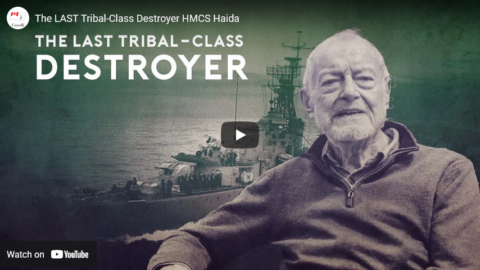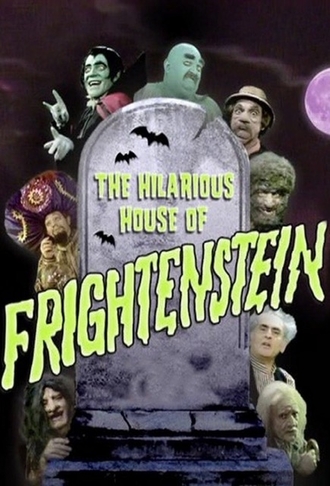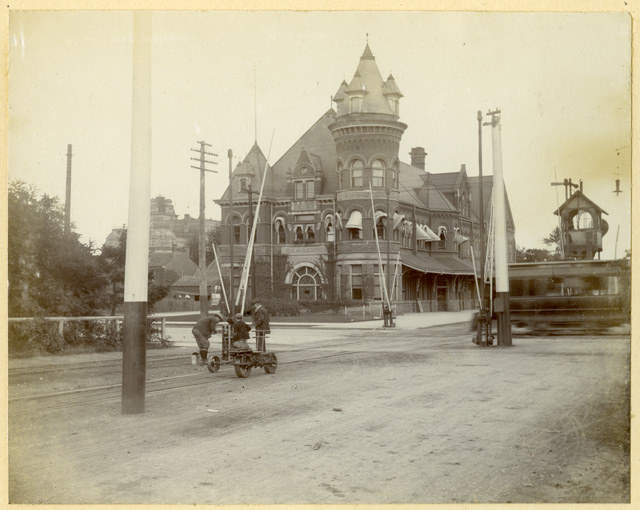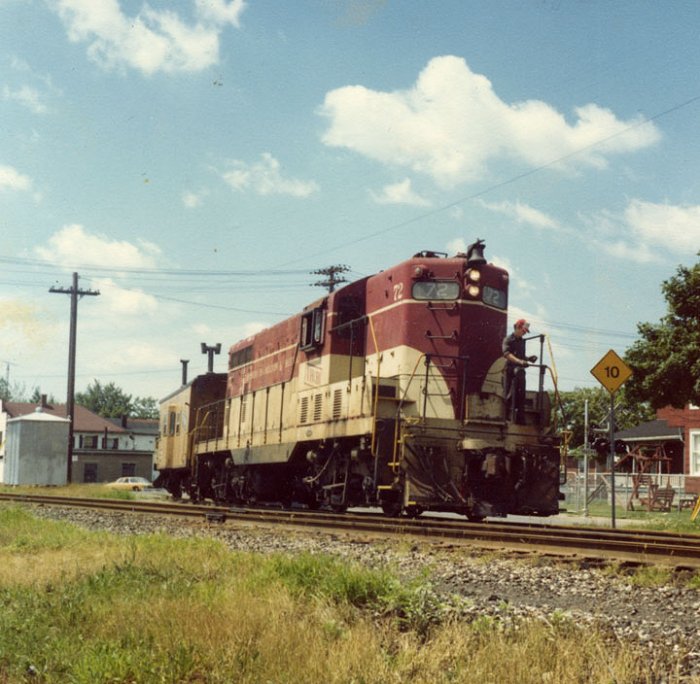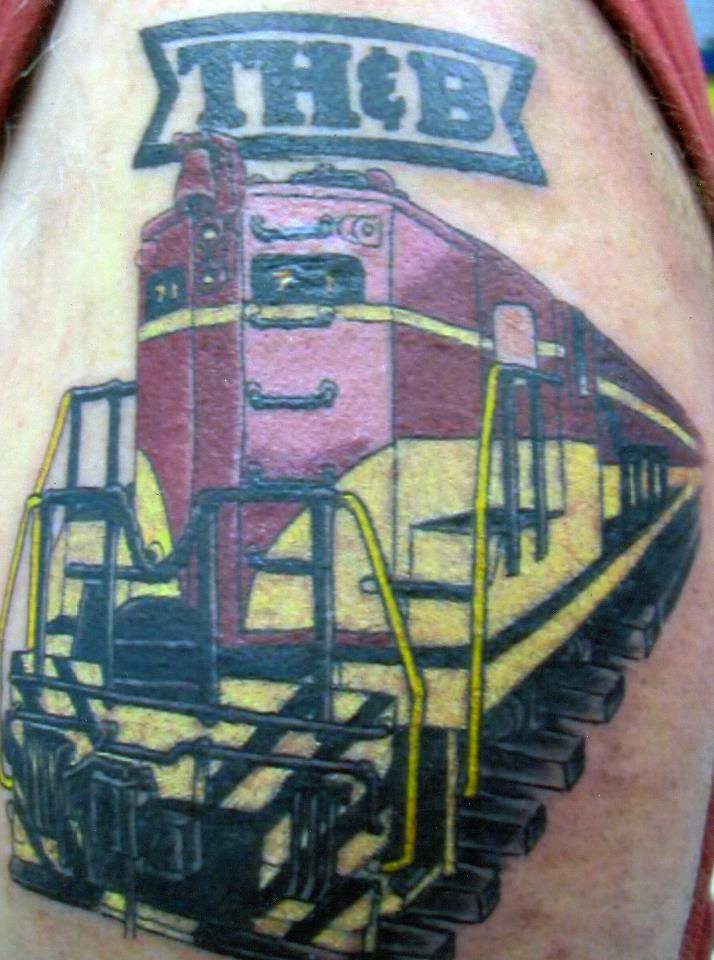Royal Canadian Navy / Marine Royale Canadienne
Published 21 Mar 2022HMCS Haida has a long and distinguished naval career of service during the Second World War, the Korean Conflict and the Cold War, that’s why Canada’s “fightingest ship” is today a National Historic Site and the ceremonial flagship of the Royal Canadian Navy.
BUT … have you heard the rest of the story?
The incredible journey of saving Haida after being decommissioned in 1963 is told as you’ve never heard it before directly from the last survivor of HAIDA Inc., the group responsible for rescuing the aging Tribal-class destroyer from the scrap heap.
March 22, 2022
The LAST Tribal-Class Destroyer — HMCS Haida
October 26, 2020
Kathy Shaidle tells the story of Hamilton’s 1970s cult children’s TV show
I still have fond memories of CHCH TV’s Hilarious House of Frightenstein and Kathy Shaidle clearly does too:
The Hilarious House of Frightenstein was produced in 1971 by our one and only TV station, CHCH. This hour-long, 130-episode kids’ show combined the mid-century sensibility of Famous Monsters of Filmland with the then-hip look and sound of psychedelia: kaleidoscopic “special effects” plus Top 40 hits spun by “The Wolfman,” an affectionate rip-off of legendary DJ Wolfman Jack.
The show’s “plot” concerned a banished count’s attempts to revive his comatose monster, Brucie, but that was just a flimsy excuse to mount a fast-paced series of corny sketches, semi-serious “educational” segments, and — years before The Simpsons and Pixar — “over the kids’ heads” jokes aimed at adults who might find themselves awake at dawn, or earlier.
The part that always puzzled me as a kid was that a local southern Ontario low-budget TV show for kids had international movie star Vincent Price in it. Kathy explains how it happened:
Older and “uncool” (despite receiving the imprimatur of another rising Hollywood director, Roger Corman), Price was out of fashion.
At the same time, CHCH had a limited budget, but wanted and needed some star power for their single camera kid’s show.
Who better to host this “monster mash” than Vincent Price, still one of the all-time great horror-movie icons?
Frightenstein‘s producer tracked down Price, who agreed to work for $3000 a day, one quarter of his usual per-diem appearance rate.
He loved children, he explained simply. And the gig sounded like fun.
CHCH checked their tiny budget. They could only afford Price for four days, tops.
Four days it would have to be.
Everyone signed on the dotted line.
I’ve heard the story of what happened next from different sources, and it never ceases to warm my heart:
Price arrived at the modest TV studio, got into makeup and costume and was handed reams of doggerel poems about some crazy characters he’d never heard of before.
He’d read each piece once, put his head down, then look up at the camera’s red light and utter his lines perfectly in one take.
Next!
New makeup, new costume, same perfect delivery, hour after hour.
Finally, it was time for a break. The weary yet exhilarated crew turned off the cameras and lights.
Then they looked around and realized that Vincent Price had disappeared.
Oh well, they said to each other, what do you expect? He’s a big star and all. Plus he’s, like, 60 years old, so he probably went for a nap…
The studio door opened a few minutes later.
It was Vincent Price and a cab driver, hauling “two-fours” of beer from the nearby Brewer’s Retail.
He handed cold stubbies out to the cast and crew and regaled them with tales of old Hollywood, his days working with Karloff and Peter Lorre and Gene Tierney and Cecil B. DeMille and all the other greats he’d known.
July 2, 2020
Fallen flag — the Toronto, Hamilton & Buffalo Railway
 This month’s Classic Trains featured fallen flag is my favourite Canadian railway … I founded the TH&B Railway Historical Society many years ago (you can download a PDF of the first newsletter I did here … I didn’t have access to any TH&B photo I could use in the publication at that point, so it’s pretty much all text and tables). I put together as much information as I had about the railway at that time and printed up a few hundred copies to distribute at a regional railfan event (the CN Lines event in Oakville during October 1997), hoping to find fellow fans of the TH&B (back in those long-distant days when you couldn’t just run a quick search from your web browser, and most people didn’t yet have email addresses). The gamble worked and we had a formal historical society up and running for the following issue. I published the newsletter for five years before finally burning out and handing it over to more capable hands.
This month’s Classic Trains featured fallen flag is my favourite Canadian railway … I founded the TH&B Railway Historical Society many years ago (you can download a PDF of the first newsletter I did here … I didn’t have access to any TH&B photo I could use in the publication at that point, so it’s pretty much all text and tables). I put together as much information as I had about the railway at that time and printed up a few hundred copies to distribute at a regional railfan event (the CN Lines event in Oakville during October 1997), hoping to find fellow fans of the TH&B (back in those long-distant days when you couldn’t just run a quick search from your web browser, and most people didn’t yet have email addresses). The gamble worked and we had a formal historical society up and running for the following issue. I published the newsletter for five years before finally burning out and handing it over to more capable hands.
The society is still in operation, and the newsletter (now called The Ontarian) is mailed out four times per year. Membership information available at the society website.
Greg McDonnell begins the article with a quick look at the TH&B’s early history:
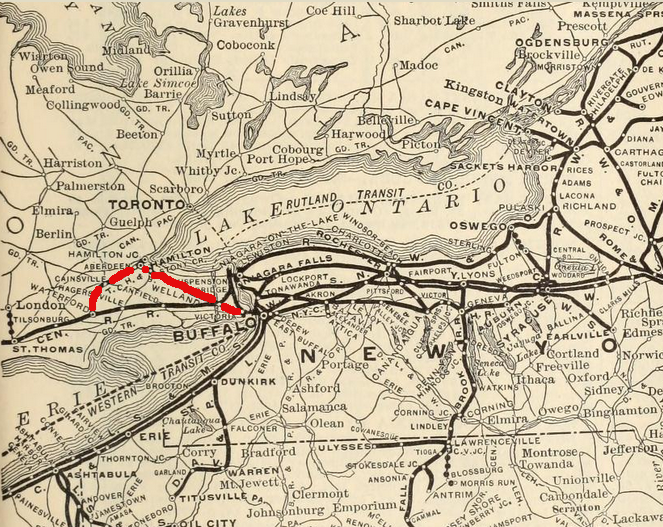
Detail from a map published in The Commercial and Financial Chronicle in 1908. TH&B trackage has been marked in red (not on the original image).
Wikimedia Commons.
Canada, thanks to its two transcontinental giants after 1923, had few small “regional” railroads. One, though, was the 111-mile Toronto, Hamilton & Buffalo Railway, which vanished in 1987.
Little TH&B had a larger-than-life presence that belied the reality of its being merely the southern Ontario stepchild that linked parents New York Central and Canadian Pacific. TH&B never realized its dream of being an independent road linking its three namesake cities, but in its heyday, it did haul sleeping cars from Toronto for New York, Boston, Cleveland, Pittsburgh, and Philadelphia. In 1911, it became the first North American railroad to install Absolute Permissive Block signaling; it erected a splendid art deco station and office tower in Hamilton, Ontario; and it had Canada’s only 2-8-4 steam locomotives, not to mention two ex-NYC Hudsons.
In 1890, even before a rail was laid, TH&B deviated from its chartered intentions, dropping Buffalo from its plans in favor of an eastern terminus and connection with the Canada Southern, a subsidiary of NYC’s Michigan Central, at Welland, Ontario. In 1892, TH&B acquired its first operating trackage, the faltering 18-mile Brantford, Waterloo & Lake Erie, a Brantford–Waterford line that was extending itself to Hamilton.
The original Hunter Street station in Hamilton, replaced in 1929 with the current Art Deco station now operated by GO Transit.
Local History & Archives, Hamilton Public Library via Wikimedia Commons.As crews spiked TH&B rails from Hamilton to Welland, the line’s strategic importance attracted suitors. And not just anyone, for on July 9, 1895, the still-incomplete railway was sold to a consortium headed by two of the most powerful men in North American railroading: NYC’s Cornelius Vanderbilt and CPR’s William Van Horne.
NYC, dividing its holdings with subsidiaries MC and CASO, took a 73% stake in the fledgling bridge line; CP held the remaining 27%, an arrangement that would endure for 80-plus years. TH&B was afforded a considerable measure of autonomy, but parental influence from New York and Montreal gave TH&B its unique international character.
The TH&B Society picks up the history in somewhat more detail (the original draft was mine, but several others have made additions and changes since then):
The next phase of construction was to be the line from Hamilton to Toronto. The surveyed route to Toronto closely paralleled the existing Grand Trunk Railway mainline. In order to avoid construction of a parallel line (and the potential loss of traffic to the competing line), the GTR granted running rights to the Canadian Pacific Railway between Toronto and Hamilton in 1896. That same year the TH&B constructed what became known as the Hamilton Connection between its line and the GTR at Hamilton Junction. The Hamilton Connection was subsequently leased to the CPR and became their physical connection to the TH&B.
In 1897, the TH&B obtained running rights over the Hamilton & Dundas Railway for the provision of freight service into the Town of Dundas. The H&D Railway, a local interurban line, ceased operations in 1923 and the TH&B acquired the former H&D right of way into Dundas to continue freight operations. The line into Dundas was known as the H&D Branch.
In order to tap into Hamilton’s expanding industrial sector, construction began on the Hamilton Belt Line in 1900. The Belt Line expanded with the construction of two additional branch lines in 1911 to allow access to all industrial sectors of the city, many of which were previously serviced exclusively by the GTR. Although the Belt Line was only six miles in length, it contained over 40 miles of yard and industrial sidings and would provide much financial sustenance to the TH&B over the years.
In 1914, the 14-mile Dunnville Subdivision was constructed southward from Smithville to the Town of Dunnville and extended five miles further to the shores of Lake Erie at Port Maitland in 1916. Access to Lake Erie allowed the creation of the TH&B Navigation Co. that operated between Port Maitland and Ashtabula, Ohio, from 1916 until discontinuance in 1932.
The TH&B’s final expansion occurred in 1927 when running rights were awarded over the Canadian National Railways to gain access to the industrial City of Port Colborne.
1935 saw the first abandonment of trackage when the Ridgeville Spur, a small four-mile branch extending off the Welland Subdivision just outside of Welland, was abandoned and the rails were removed in 1936.
The St. Lawrence Seaway Authority completed the construction of the present-day Welland Canal in 1972 resulting in the relocation of several rail lines in the area. The Welland Subdivision was realigned between Fenwick and Welland where a new yard was constructed and operated in conjunction with New York Central’s corporate successor, Penn Central. The new shared facility allowed the closure and removal of the original and independent TH&B and Penn Central operations located within the city. Welland Yard continues to operate today as a Canadian Pacific’s marshalling facility for the Niagara Region.
In 1976, the United States Government amalgamated six bankrupt railroads, including the New York Central’s corporate successor, Penn Central, into a new entity called Conrail. In an effort to reduce debt, Conrail began shedding foreign investments including their controlling interest in the TH&B. In 1977, CP Rail acquired Conrail’s 73% interest giving CP 100% control of the railway.
In 1985, CP Rail and Canadian National jointly acquired the assets of Conrail’s Canada Division, the former Canada Southern Railway. CP Rail acquired exclusive ownership of the eastern end of the line between the TH&B connection at Welland and the international border crossings at Niagara Falls and Fort Erie, Ontario. While CP equipment was used to operate this portion of the line, known as CP CASO, the TH&B provided the managerial and administrative functions on CP Rail’s behalf.
The TH&B would continue to operate as a separate entity until 1987 when it was amalgamated into the Eastern Region of the London Division of CP Rail.
CP Rail abandoned the H&D Branch in 1988 with the Waterford Subdivision following in 1989. Also in that year, CP discontinued operations into Port Colborne, opting not to renew the running rights agreement over the CNR.
Today, the surviving portions of the TH&B, including the Hamilton Belt Line, the former Welland Subdivision and a portion of the Dunnville Subdivision operate as part of Canadian Pacific’s Hamilton Subdivision in CPR’s Southern Ontario Service Area.
February 6, 2019
QotD: “Get off my lawn!”
The zeitgeist, of course, has also changed since 2002. Childhood obesity and screen addiction are now perceived as urgent matters of public health. A politician who wants those damn kids off his lawn is likely to be told “You’re a monster who is spreading diabetes and ruin, and, frankly, it’s amazing that there are kids on your lawn in 2017 and we would like to know how you accomplished this.”
Colby Cosh, “Hamilton finally ends its decades-old ban on street hockey, and it won’t actually change a thing”, National Post, 2017-03-06.
July 1, 2018
Naval Legends: HMCS Haida | World of Warships
World of Warships Official Channel
Published on 28 Jun 2018“The most fightingest ship of the Royal Canadian Navy”, and the last survivor of the Tribal-class! Find out more in the new Naval Legends episode!
Naval Legends is a series about the construction, service, and daring deeds of legendary 20th-century ships. Very few vessels survived World War I and II — most were decommissioned and scrapped. The Naval Legends production crew travels all across the globe to visit almost every active museum ship and chronicle her story.
Each episode has our own footage, military chronicles, and data from archives. The story of each ship is narrated by military historians, museum staff, and navy veterans for maximum historical accuracy. Computer graphics based on archival blueprints illustrate critical engineering elements and components, along with the ship’s armament, so you can observe these colossal war machines from your armchair!
July 21, 2017
Behind the Scenes of Naval Legends – HMCS Haida
Published on 19 Jul 2017
Curious about how the Naval Legends episodes are made? Want to know how the beauty shots are made? Then let me take you behind the scenes of Naval Legends HMCS Haida.
Filmed with the permission of Parks Canada, at HMCS Haida National Historic Site.
Special thanks to Nicholas Moran, WarGaming America.
June 30, 2016
More tales from Garnet Rogers’ Night Drive
While I’m eagerly awaiting the delivery of my copy of Garnet’s book, here is a report from the Local Xpress on Garnet’s upcoming appearance at the Canso Stan Rogers Folk Festival this Canada Day weekend:
The length of the journey to Canso, home of the Stan Rogers Folk Festival, is no deterrent to the hardy hundreds who’ve packed the event every July long weekend for the past two decades.
But that winding Guysborough road is just a fraction of the journey that the festival’s namesake made with his brother and bandmate Garnet Rogers prior to Stan’s death in 1983. Many of those miles are chronicled in Garnet’s new book Night Drive: Travels With My Brother, which he’s launched in time for Stanfest’s 20th anniversary. The book stretches from their parents’ roots in Canso and Pictou County to the brothers’ final conversation at the Kerrville Folk Festival in Texas. In between lies a rough and tumble tale of a furtive search for folk music glory, where it took more than talent to get ahead, and dreams seemed to get dashed on a daily basis.
“Somebody made the comment that parents should buy the book and give it to any of their kids who decide they want to become a musician or a folksinger […] It really is kind of a cautionary tale.”
[…]
Decades later, much of it has been romanticized, and writing Night Drive was an opportunity for Garnet to strip away the rose-coloured glasses, and also tell his side of the story.
“I got invited to this thing recently where the City of Hamilton is honouring Stan with a lifetime achievement award, making him a citizen of the city or something like that, sponsored by the Hamilton Spectator […] On the face of it, God bless them, but I felt like a bystander. There was no mention of the fact that I was there, or as far as Stan was concerned, 50 per cent of the equation.
“Stan handed over 49 per cent of his publishing to me, half ownership of the songs, that should mean something in terms of how he at least perceived my contribution, but the average person doesn’t know any of that. So part of writing this was simply to say I was there. I don’t want someone coming up to me and giving me some blather about how seeing Stan changed their life and they’ll never forget that concert, but they don’t remember that I was there, because I bloody was.
“So a lot of it was setting the record straight, but more importantly I wanted it to be funny.”
And much of the book is laugh-out-loud hilarious, as Rogers describes how he and his brother were performing the musical equivalent of “scrawling your name on a cave wall” while playing for distracted pit miners at a disco in Labrador City. Or in a pressure cooker of a bar in Jasper, Alta., where the audience was split down the middle between railway and oil rig workers who hated each other, which eventually erupted in a melee that nearly saw Stan charged with assault with a deadly weapon, in this case a mike stand.
“There was something in that ‘three young guys in a van together’ thing […] Whether the gig was good, bad or indifferent, you could always find something to laugh about. Like the opening chapter about the non-existent gig in Baltimore and that young woman sitting on the couch with no underwear, every damn detail of that story is absolutely true, not even remotely exaggerated.
“It was just as squalid as it sounds, and you come out of something like that, the worst disaster ever, but you’re laughing and laughing, and a few hours later you realize you’re miles from home and completely broke. But in the meantime you’ve got three young guys who are just dying with laughter because of the insanity of the situation.”
February 23, 2015
I thought I was a fan of the old TH&B Railway…
I mean, after all, I founded a historical society based on the study of the railway … but Mel McInnis puts me into the shade with his dedication to the old Toronto, Hamilton & Buffalo Railway:
November 4, 2012
Remembering the Toronto, Hamilton & Buffalo Railway
My friend John Spring is sharing some of his vast collection of railway film and photos with Canrail Video, and they’ve posted this excerpt of footage on the railway, including some of the last runs under steam on the TH&B:
TH&B Steam from the collection of John Spring. Copyrighted material ©2012 Canrail Video Productions. All rights reserved. You can however, link to this show from your site. This video will be shared for a short time only. You can view is and other John Spring films on future Canrail/Green Frog productions in the near future.
For more information on the railway, check the TH&B Railway Historical Society page or the Yahoo group (full disclosure: I founded the historical society, although I’m not currently active with the organization). I’m also the moderator for the discussion group.

